A cuvée resulting from a light brewing of 18/24 hours obtained with grapes sorted, destemmed and trampled with feet for between extraction of colour. No pressing, we only keep the juice dripping so that we use 20% more grapes per bottle.
Menu

Lydie and Arnaud Billard, winemakers and champagne-growers, continue the family business of four generations and run 8 hectares of vineyards composed of 3 Champagne grape varieties.
Located in the Marne valley, near Epernay, our company runs 8 hectares of vineyards, under the Champagne appellation. Our grape vines are located in the heart of the Marne Valley in the small wine village of REUIL where the vineyards of Champagne are listed as a UNESCO World Heritage site.
Our Coquard press, renowned for its exceptional juice extraction, and our thermos-regulated stainless-steel vats allow us to produce quality wines.
Therefore, when you taste our champagne you can appreciate the joyous meeting of the sustainable agriculture of our south-facing vines and the excellence of our equipment in support of an age-old family tradition.
Our Champagnes have been recognised for their excellence by guides (Hachette, Gault et Millau) and by the Independent Winegrowers Competition.
Our vineyard also has a selection of five charming guestrooms.
You can visit our miniature Vineyard Museum, the only one in Champagne (with more than 220 animated and non-animated 30cm figurines), retracing the life of a historical village centred around vineyards and wine-making.
Come and enjoy the luxury of the Bacchus vineyard and discover the wonders of our region.
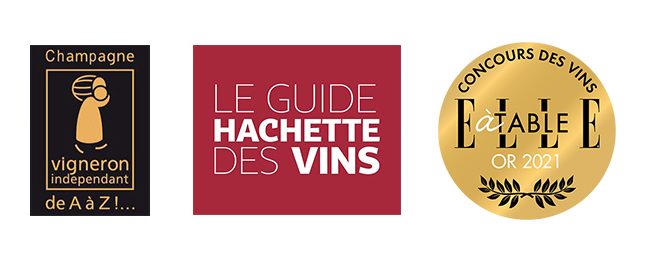
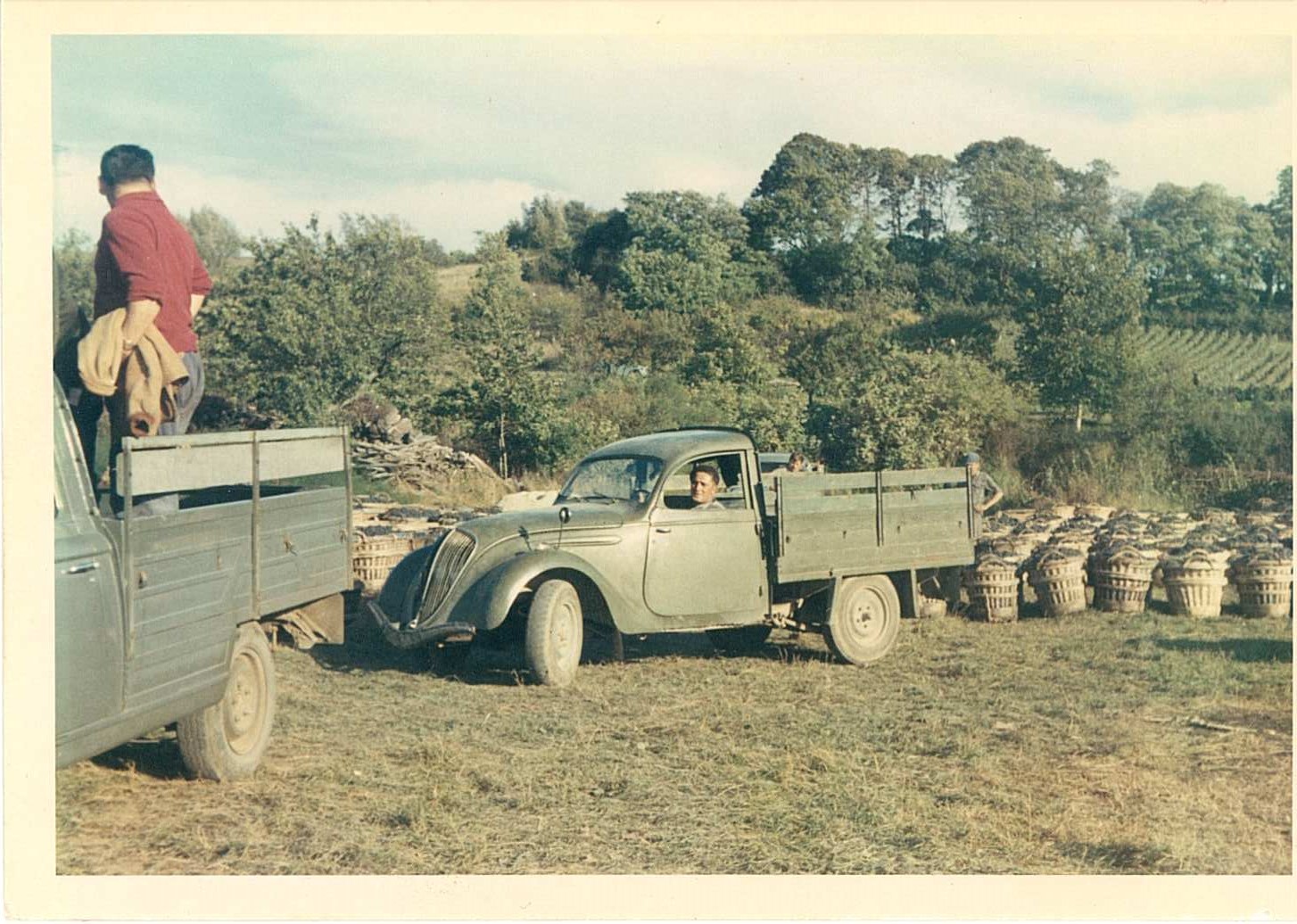
The Dom Bacchus vineyard is a family home now under the control of Lydie and Arnaud BILLARD. Together, the couple have divided the different vineyard and winemaking tasks; Arnaud takes care of the vineyard and its sustainable agriculture, Lydie takes care of the winemaking thanks to her knowledge and expertise. As great wine enthusiasts, the couple manages the entire family business, everything from vine cultivation to sales.
The grapes are harvested then pressed with the family’s Coquard press, and all the winemaking is done on site using a unique age-old technique passed down from previous generations.
We employ three members of staff who are equally passionate about the vineyard and equally committed to upholding the values of the Billard family.
During the trellising and harvesting seasons, the family welcomes two teams of qualified seasonal workers whose expertise produces the best harvests even during the least favourable periods. It is thanks to their commitment and perseverance that the limited harvest in 2017 has nevertheless been qualitatively fruitful. Their thorough and meticulous sorting of grapes helped develop some of the best wine to offer in the heart of the family vineyard.
The Dom Bacchus vineyard offers quality champagnes with a unique taste derived from passion and hard-work.

The Dom Bacchus vineyard is a family home now under the control of Lydie and Arnaud BILLARD. Together, the couple have divided the different vineyard and winemaking tasks; Arnaud takes care of the vineyard and its sustainable agriculture, Lydie takes care of the winemaking thanks to her knowledge and expertise. As great wine enthusiasts, the couple manages the entire family business, everything from vine cultivation to sales.
The grapes are harvested then pressed with the family’s Coquard press, and all the winemaking is done on site using a unique age-old technique passed down from previous generations.
We employ three members of staff who are equally passionate about the vineyard and equally committed to upholding the values of the Billard family.
During the trellising and harvesting seasons, the family welcomes two teams of qualified seasonal workers whose expertise produces the best harvests even during the least favourable periods. It is thanks to their commitment and perseverance that the limited harvest in 2017 has nevertheless been qualitatively fruitful. Their thorough and meticulous sorting of grapes helped develop some of the best wine to offer in the heart of the family vineyard.
The Dom Bacchus vineyard offers quality champagnes with a unique taste derived from passion and hard-work.
The blending of a variety of different cuvées is a testament to Lydie’s knowledge and expertise which ensures the consistent quality of our product.
The production of Champagne is achieved as follows:
During the different production phases for our musts and wines, we intervene as little as possible in order to retain maximum flavour.
A cuvée resulting from a light brewing of 18/24 hours obtained with grapes sorted, destemmed and trampled with feet for between extraction of colour. No pressing, we only keep the juice dripping so that we use 20% more grapes per bottle.
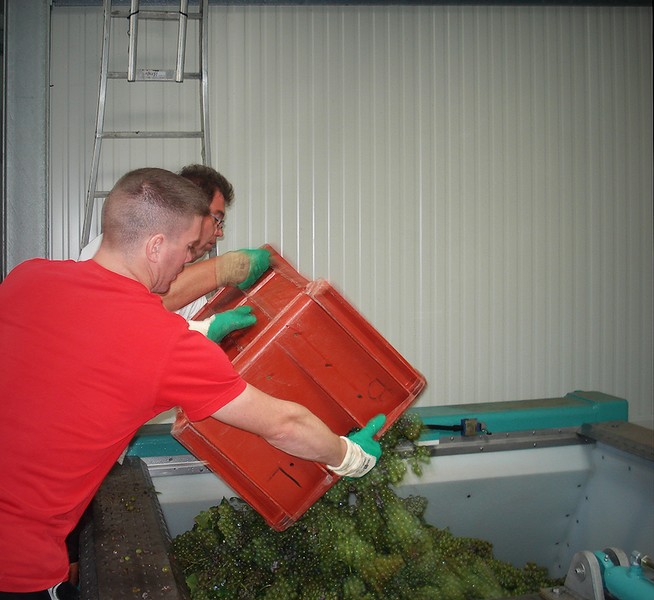
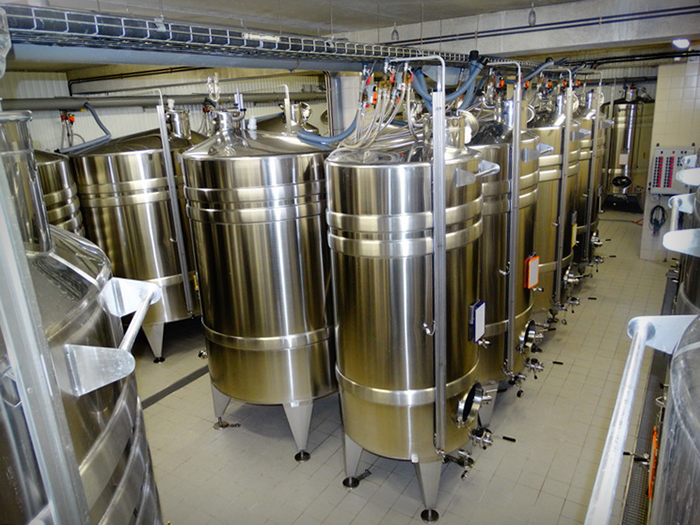
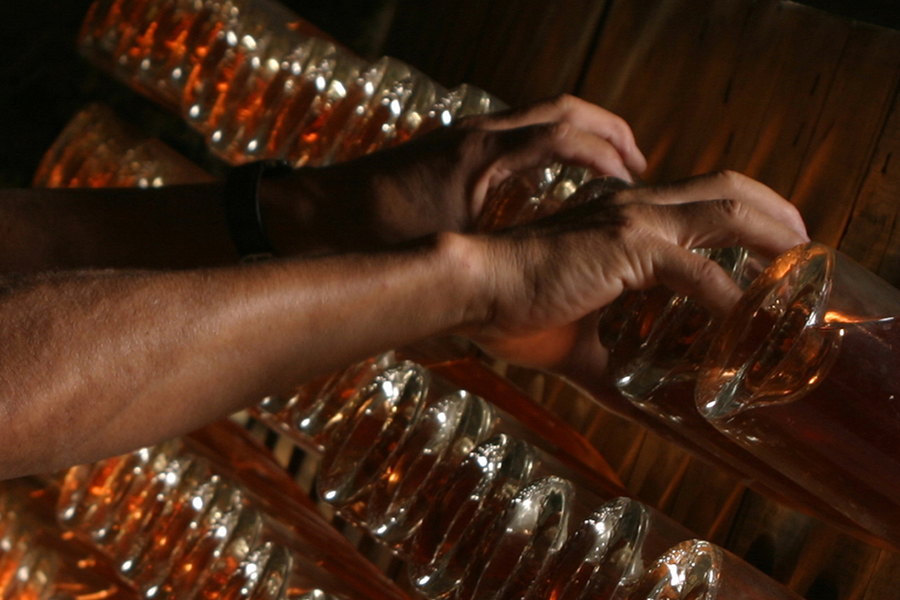
The wine tradition in Champagne is quite old: it goes back to the time of the Romans from the 3rd century AD. They are the ones who planted the first vines. From the 5th century, the Champagne vineyard was maintained thanks to the attention given to it by the Clergy and especially the bishoprics of Reims and Châlons which produced still white and red wines which the people from Champagne fought the urge to turn into sparkling wine.
From 898 to 1825, it was in Reims, in the heart of the Champagne region, that the kings of France were crowned. It was during this period that the wines started gain notoriety, a notoriety spread by the famous fairs of Champagne.
The ceremonies, according to the accounts that were made of them, were all accompanied by feasts during which the champagne wines flowed freely. Very quickly appreciated for their taste and finesse, these soon became the wines that were offered in tribute to the monarchs who came to the region.
By the twelfth century, the reputation of Champagne wines had crossed the borders and their prestige continued to grow. But sources prove the success of these sparkling wines, nicknamed “cork jumpers”, in England long before their recognition in France, which began in the 1700s.
As a symbol of excellence, Champagne was always prominently featured on the menus of major royal weddings. It was the magical and spectacular guest of the great universal exhibitions of 1889 and 1900 in Brussels and Paris; and over time, confirmed its image as an exceptional wine. Today, more than ever, it is always champagne that is called for when it comes to distinguishing the rarity or grandeur of an event.
There are several legends about the first production of Champagne including the story of Dom Pérignon which is frequently told.
It is said that the Benedictine monk Dom Pierre Pérignon is the great inventor of champagne at the abbey of Hautvillers near Epernay. He then discovered how to maintain consistent foam in the manufacture of champagne that gave rise to a new method of wine pressure: the champagne method. Today Dom Pérignon champagne is one of the most prestigious wines in the world.
Champagne in miniature form
In the immediate vicinity of our cellars, you can visit our Miniature Vineyard Museum, the only one in Champagne (with more than 220 animated and non-animated 30cm figurines), retracing the life of a historical village centred around vineyards and wine-making.
All stages of champagne production are represented here, including the tools and techniques used throughout history.
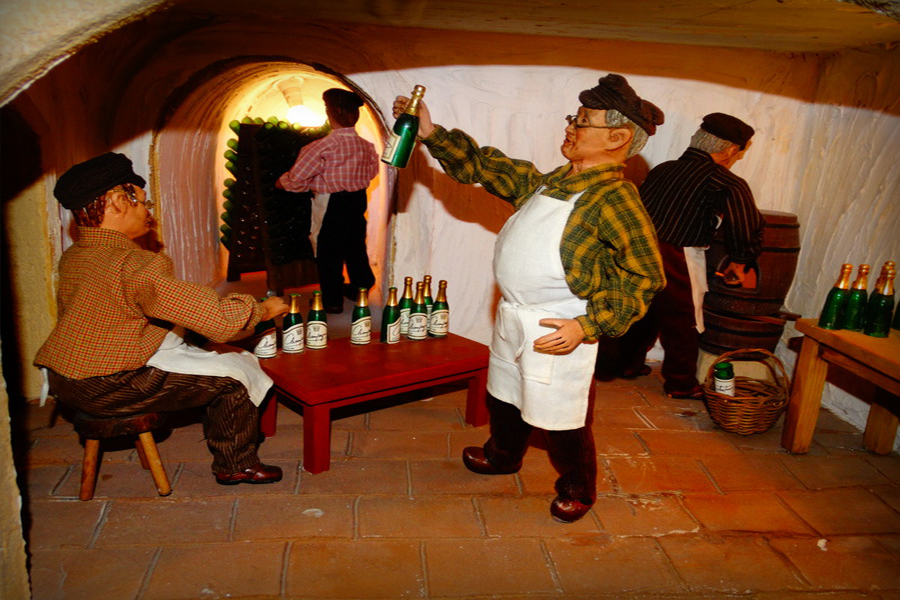

All pieces shown in this permanent exhibition are unique, whether they are figurines themselves or decorations, models of houses or vineyards. They were created specifically to highlight the Billard family’s passion for wine and the winemaking history of their region.
Join the thousands of curious, passionate or merely intrigued visitors from the past ten years and come immerse yourself in the extraordinary history of our vineyard.
You will discover traditions which date from before the war, before the emergence of mechanisation, through our 75m² model covered with 220 figures, 30cm high. You’ll see scenes of everyday life, but also of working on the vineyard throughout the seasons. Immerse yourself in the region and discover different aspects of champagne production, from the planting of the vines to making Champagne bottles. Awaken your taste buds with a sparkling visit to our vineyard and learn about the evolution of champagne.
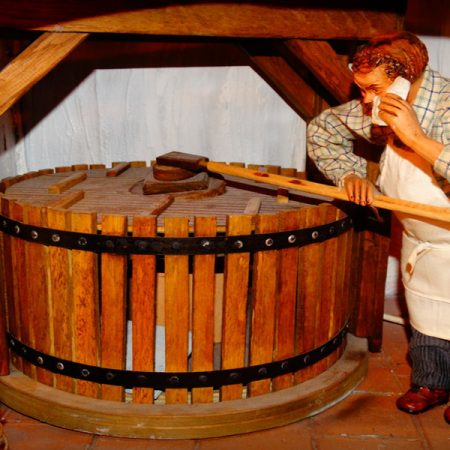
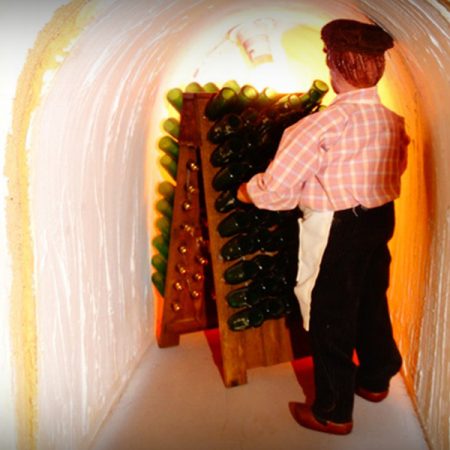
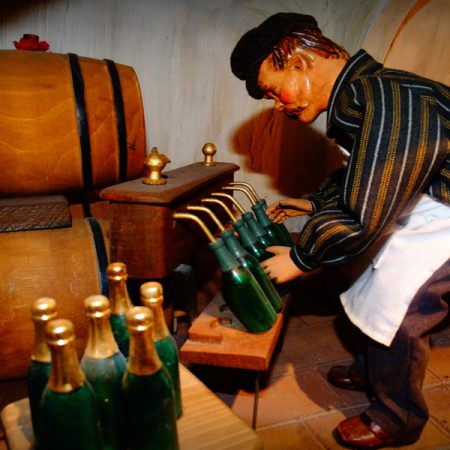



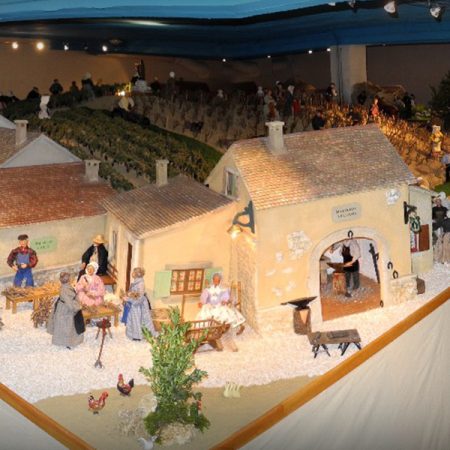
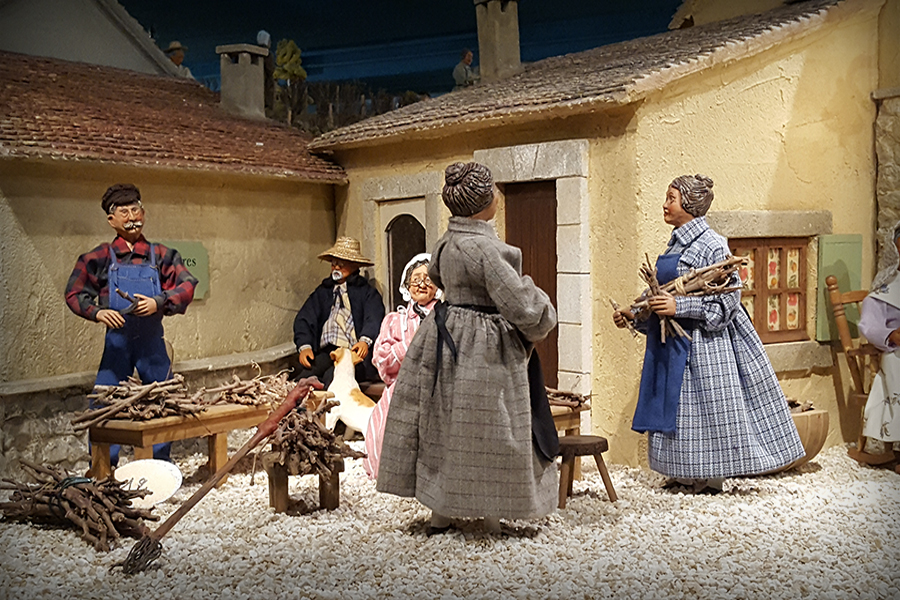
The extraordinary miniature museum of Champagne, in Reuil in the Marne Valley
Lydie & Arnaud Billard
4 rue Bacchus, Reuil 51480 AU-COEUR-DE-LA-VALLÉE
Courriel : contact@champagne-dom-bacchus.fr
Tél. : 06.88.15.73.60
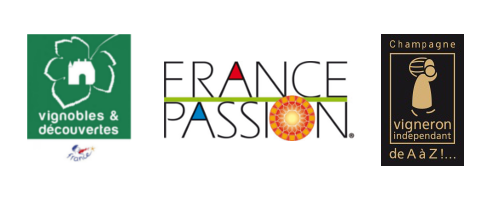
© CRÉATION DU SITE INTERNET WWW.ELHEM.FR